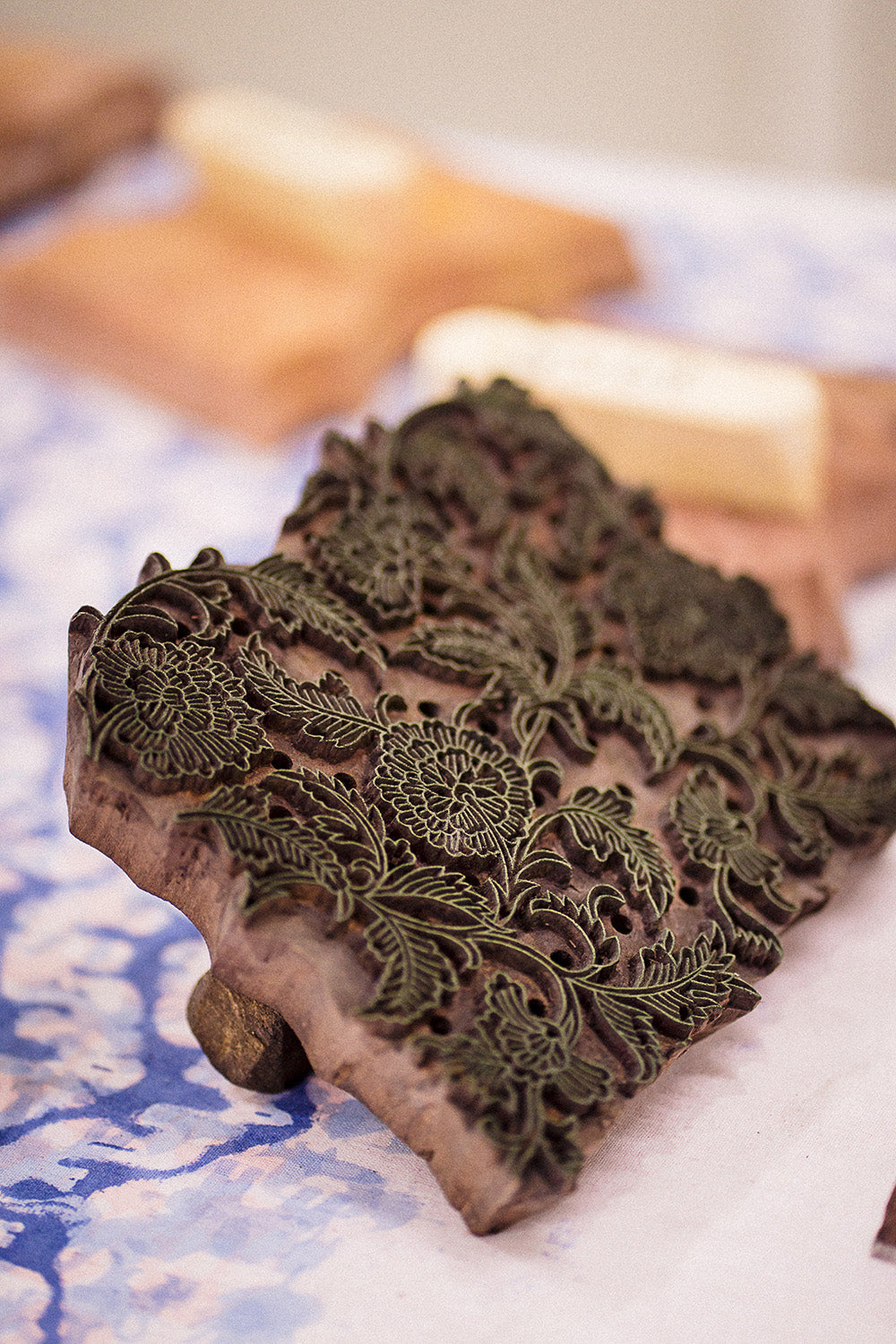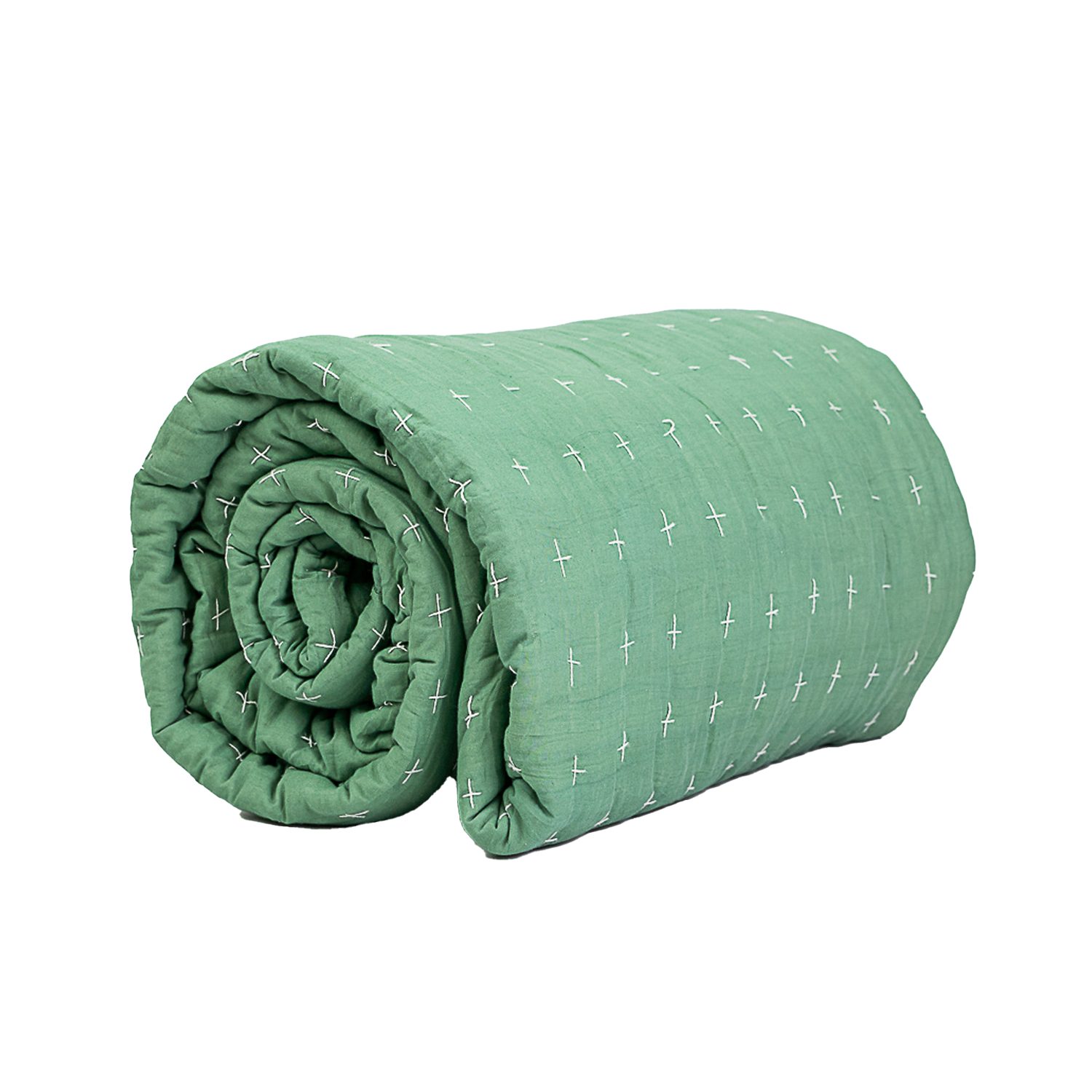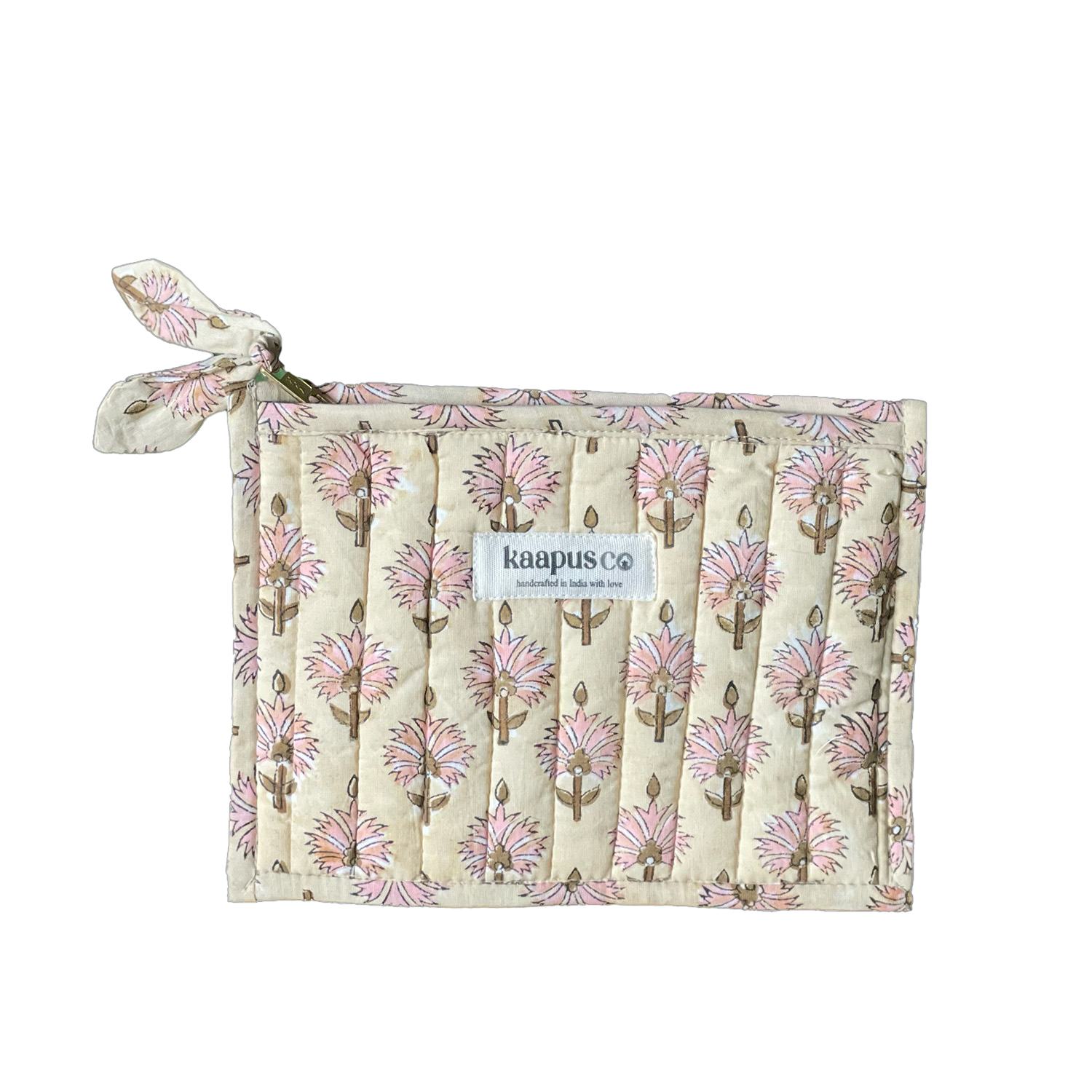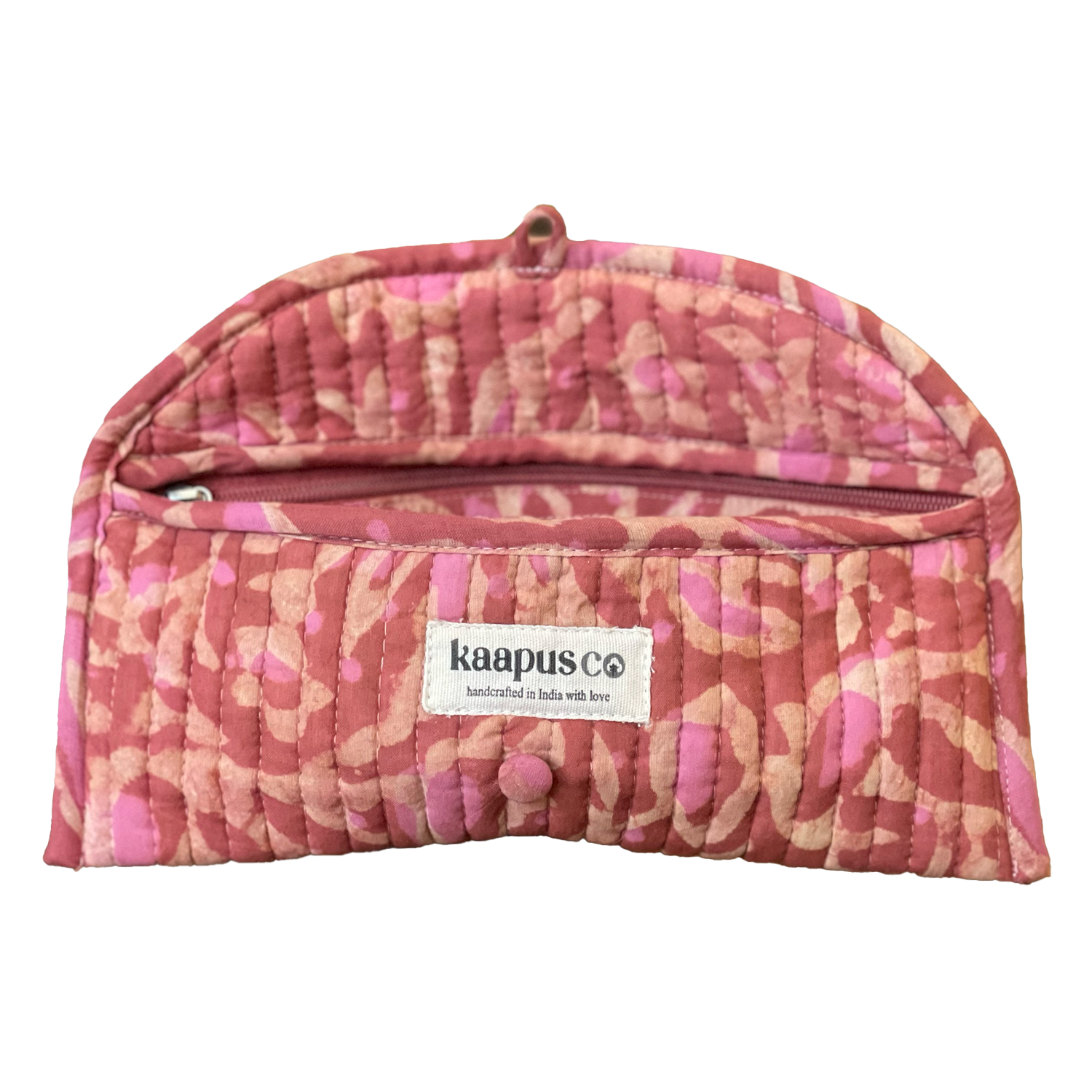Once upon a time, in the vast and vibrant land of India, an exquisite form of art was born, one that would weave its way through the fabric of history, quite literally! This is the tale of block printing, an age-old craft that has not just survived the test of time but has flourished, bringing color and story to the simple cotton and silk threads of Indian textiles.
The roots of Indian block printing stretch back to ancient times, with some whispers in the corridors of history suggesting that this craft might have begun as early as 2000 BC. Imagine, if you will, artisans of old, their hands carving delicate patterns into wooden blocks, each a mirror to the diverse flora, fauna, and cultural ethos of their surroundings. These blocks, steeped in natural dyes, then danced upon the fabric, leaving behind impressions that told tales of their creators' land, beliefs, and way of life.
As we meander through the annals of history, we find ourselves in the medieval period, a time when Indian block-printed textiles began to capture the imagination of the world. The ports of Gujarat became bustling hubs of trade, with block-printed fabrics being highly sought after by merchants from far-off lands. These textiles, known for their intricate designs and vibrant colors, were not just commodities but ambassadors of India's rich artistic heritage.
Fast forward to the era of the Mughal Empire, and block printing saw a renaissance of sorts. The Mughals, with their refined aesthetic sensibilities, were patrons of the arts and crafts, and block printing was no exception. They introduced new motifs, inspired by Persian art and architecture, adding a layer of sophistication and intricacy to the craft. It was during this time that regions like Rajasthan began to emerge as major centers of block printing, with towns like Bagru and Sanganer becoming synonymous with this art form.
But what makes Indian block printing truly remarkable is not just its ancient origins or royal patronage; it's the resilience and adaptability of the artisans who have kept this craft alive through centuries. In Rajasthan, for instance, the chippas (block printers) of Bagru and Sanganer have continued to practice their craft, passing down their knowledge from one generation to the next. These artisans are not just keepers of tradition but innovators, constantly experimenting with designs, fabrics, and dyes to keep their art relevant in a changing world.
And then there's Gujarat, with its Ajrakh printing, a craft so meticulous and time-consuming that it's almost a meditation in motion. The Ajrakh artisans of Kutch, with their symphony of indigo and madder, create textiles that are a testament to the human capacity for beauty and precision.
As we traverse through the timeline of block printing in India, it's clear that this is not just a craft; it's a narrative woven into the very fabric of Indian culture. From the ancient carvings on wooden blocks to the vibrant prints that adorn modern wardrobes, block printing tells the story of India's artistic ingenuity, its connection to nature, and its undying spirit of creativity.
So, the next time you hold a piece of block-printed fabric, remember, you're not just holding a textile; you're holding a piece of history, a fragment of the soul of India. And who knows, maybe the blocks used to print that fabric were carved by a descendant of those ancient artisans, continuing a legacy that's as vibrant and enduring as the prints themselves. Now, isn't that something to marvel at?
The roots of Indian block printing stretch back to ancient times, with some whispers in the corridors of history suggesting that this craft might have begun as early as 2000 BC. Imagine, if you will, artisans of old, their hands carving delicate patterns into wooden blocks, each a mirror to the diverse flora, fauna, and cultural ethos of their surroundings. These blocks, steeped in natural dyes, then danced upon the fabric, leaving behind impressions that told tales of their creators' land, beliefs, and way of life.
As we meander through the annals of history, we find ourselves in the medieval period, a time when Indian block-printed textiles began to capture the imagination of the world. The ports of Gujarat became bustling hubs of trade, with block-printed fabrics being highly sought after by merchants from far-off lands. These textiles, known for their intricate designs and vibrant colors, were not just commodities but ambassadors of India's rich artistic heritage.
Fast forward to the era of the Mughal Empire, and block printing saw a renaissance of sorts. The Mughals, with their refined aesthetic sensibilities, were patrons of the arts and crafts, and block printing was no exception. They introduced new motifs, inspired by Persian art and architecture, adding a layer of sophistication and intricacy to the craft. It was during this time that regions like Rajasthan began to emerge as major centers of block printing, with towns like Bagru and Sanganer becoming synonymous with this art form.
But what makes Indian block printing truly remarkable is not just its ancient origins or royal patronage; it's the resilience and adaptability of the artisans who have kept this craft alive through centuries. In Rajasthan, for instance, the chippas (block printers) of Bagru and Sanganer have continued to practice their craft, passing down their knowledge from one generation to the next. These artisans are not just keepers of tradition but innovators, constantly experimenting with designs, fabrics, and dyes to keep their art relevant in a changing world.
And then there's Gujarat, with its Ajrakh printing, a craft so meticulous and time-consuming that it's almost a meditation in motion. The Ajrakh artisans of Kutch, with their symphony of indigo and madder, create textiles that are a testament to the human capacity for beauty and precision.
As we traverse through the timeline of block printing in India, it's clear that this is not just a craft; it's a narrative woven into the very fabric of Indian culture. From the ancient carvings on wooden blocks to the vibrant prints that adorn modern wardrobes, block printing tells the story of India's artistic ingenuity, its connection to nature, and its undying spirit of creativity.
So, the next time you hold a piece of block-printed fabric, remember, you're not just holding a textile; you're holding a piece of history, a fragment of the soul of India. And who knows, maybe the blocks used to print that fabric were carved by a descendant of those ancient artisans, continuing a legacy that's as vibrant and enduring as the prints themselves. Now, isn't that something to marvel at?






